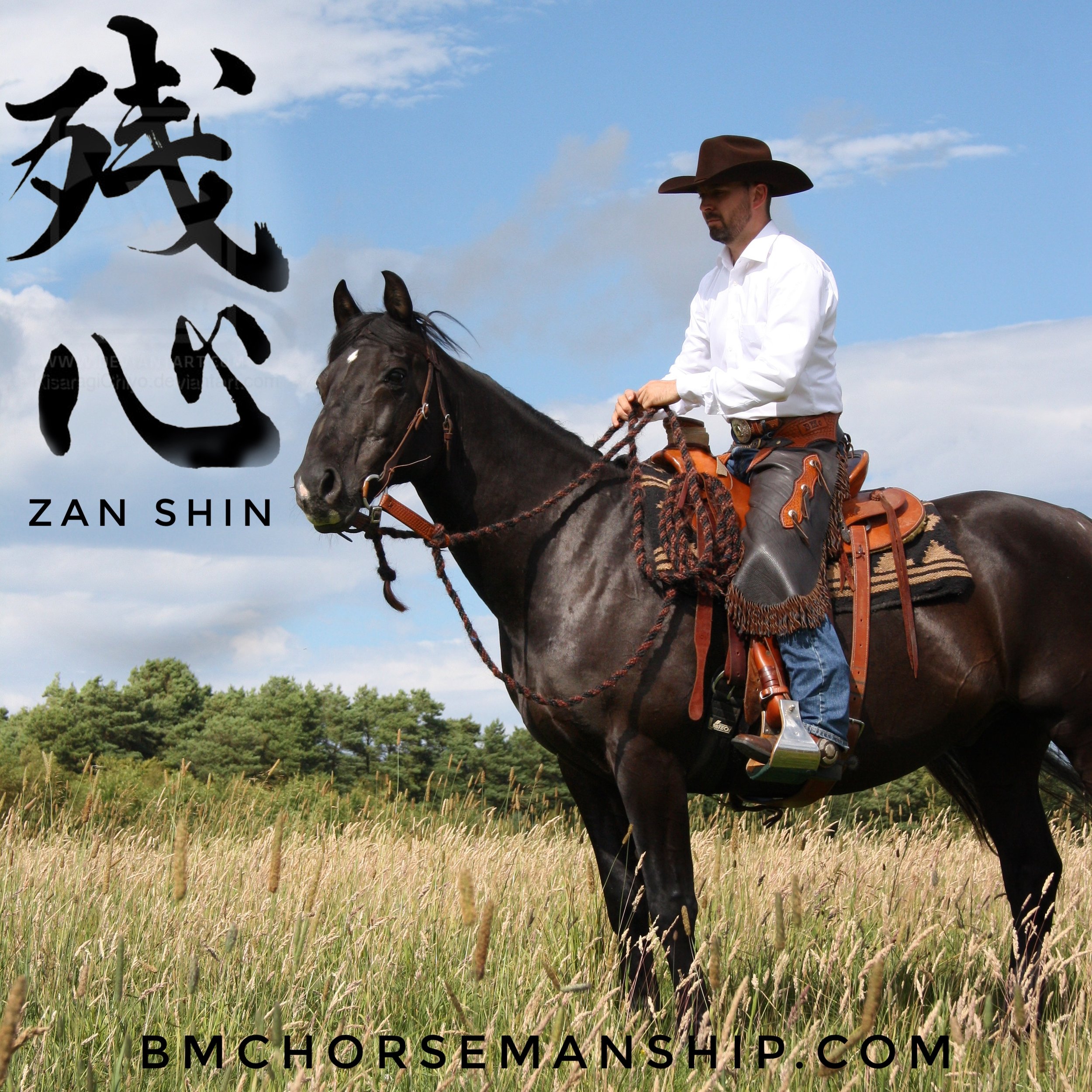Zanshin – The Remaining Mind
In the practice and study of Karate there are a number of philosophical mindsets originating in zen Buddhism. One of those mindsets I have already written about – Shoshin, the beginner's mind.
Another mindset is known as Zanshin.
Zanshin is translated as the remaining mind, or the lingering mind. It is a state of mind in martial arts demonstrated after the execution of technique (or landing a successful blow/point in competition). To demonstrate Zanshin a person should maintain decorum and focus for a period after the maneuver or technique has been executed. In the kumite (fighting) element of karate, if you celebrate scoring a point against your opponent too soon (or sometimes at all), the traditional rules and values state that the point will be deducted through lack of demonstrating Zanshin.
Demonstrating and practicing Zanshin, is to hold a focussed and lingering mind after the completion of an action. It is an important mindset to cultivate in horsemanship for a great number of reasons.
The most straightforward and practical reason is that in the training of horses we need to give horses sufficient time to process events. One of the biggest mistakes people make whilst learning to train horses is that they too quickly move from one maneuver, game, or request to another without giving a horse adequate time to experience the comfort of release.
Horses experience the world (specifically relating to training) in ten second windows. In order to feel the release of pressure (at least in the first instance) a horse needs to experience at least 10 seconds of release. If you see me working with a young or green horse there will be regular intervals where I cease all activity. In these moments it is important to remain focussed on the horse whilst holding a relaxed non-threatening demeanor (this is the practice of Zanshin). This is to allow the horse time to feel the comfort of the release of pressure. For example, during in-hand work, if I ask my horse to take a lateral (sidewards) step for the first time, I will immediately soften my posture and move away from my horse when the horse attempts or successfully completes the correct movement. I will hold this relaxed and easy posture with my attention on the horse for 10 seconds or more - allowing the horse to feel comfort from the release of pressure.
Horses require a distinct break in the chain of events (which is created by the release of pressure) in order to understand what action or activity removed the pressure from the situation. When I give my horse a 10 seconds (or more) break after completing a task, I am helping the horse understand that the last action completed was the one that removed pressure.
However, Zanshin is not simply demonstrating focus after the release of pressure. It is about developing a sense of awareness and focus throughout the entirety of the situation at hand – understanding that nothing is finished even after it is finished.
It is a focussed sense of awareness that lingers through the entire process of training, (and beyond). It is about applying a mindset that is both relaxed and patient and to be free of distraction and external thought.
Combined with many other mindsets of martial arts training, a person's confidence and ability working with horses can be greatly improved by endeavoring to practice, and cultivating the mental state of Zanshin.

